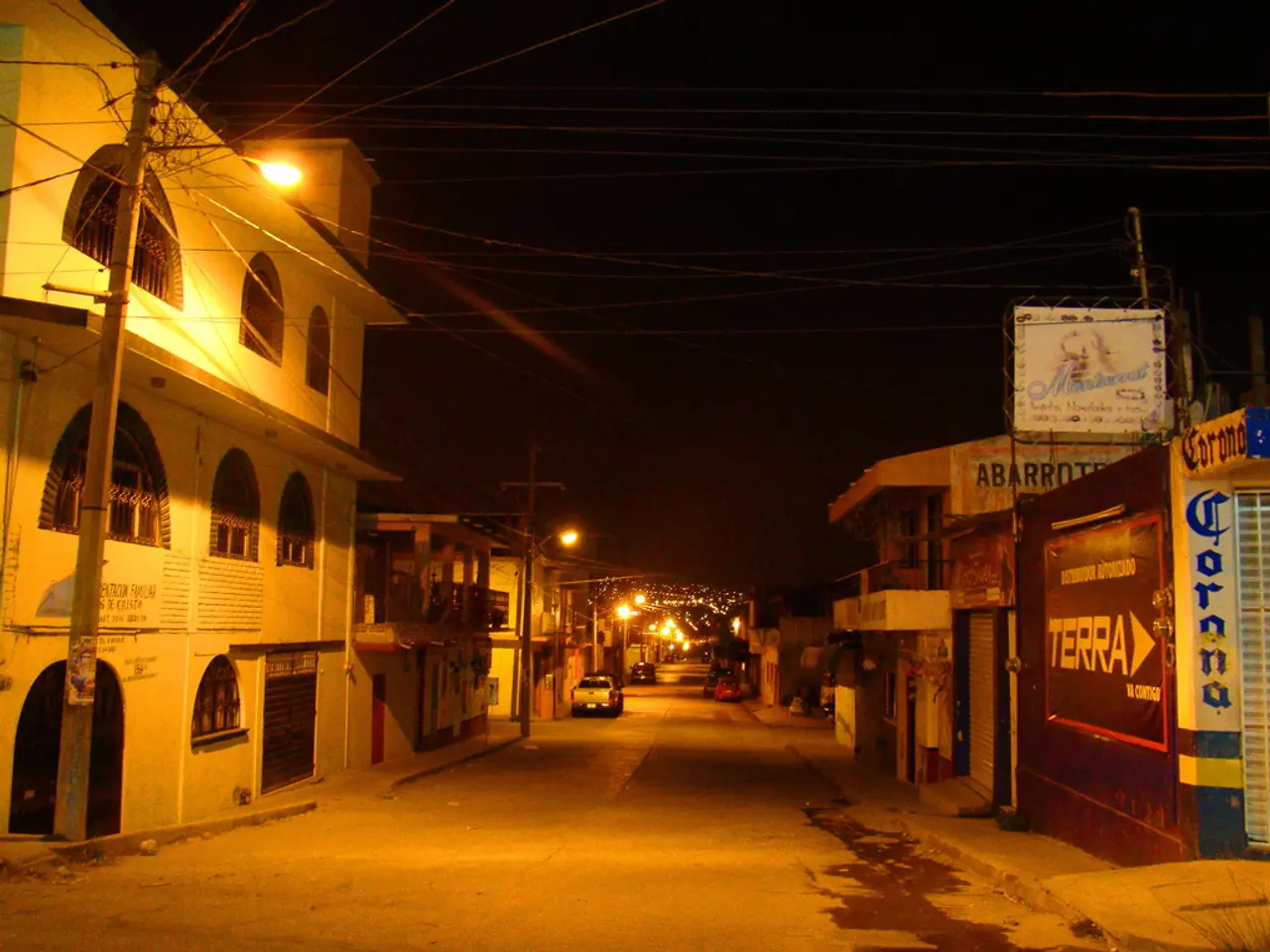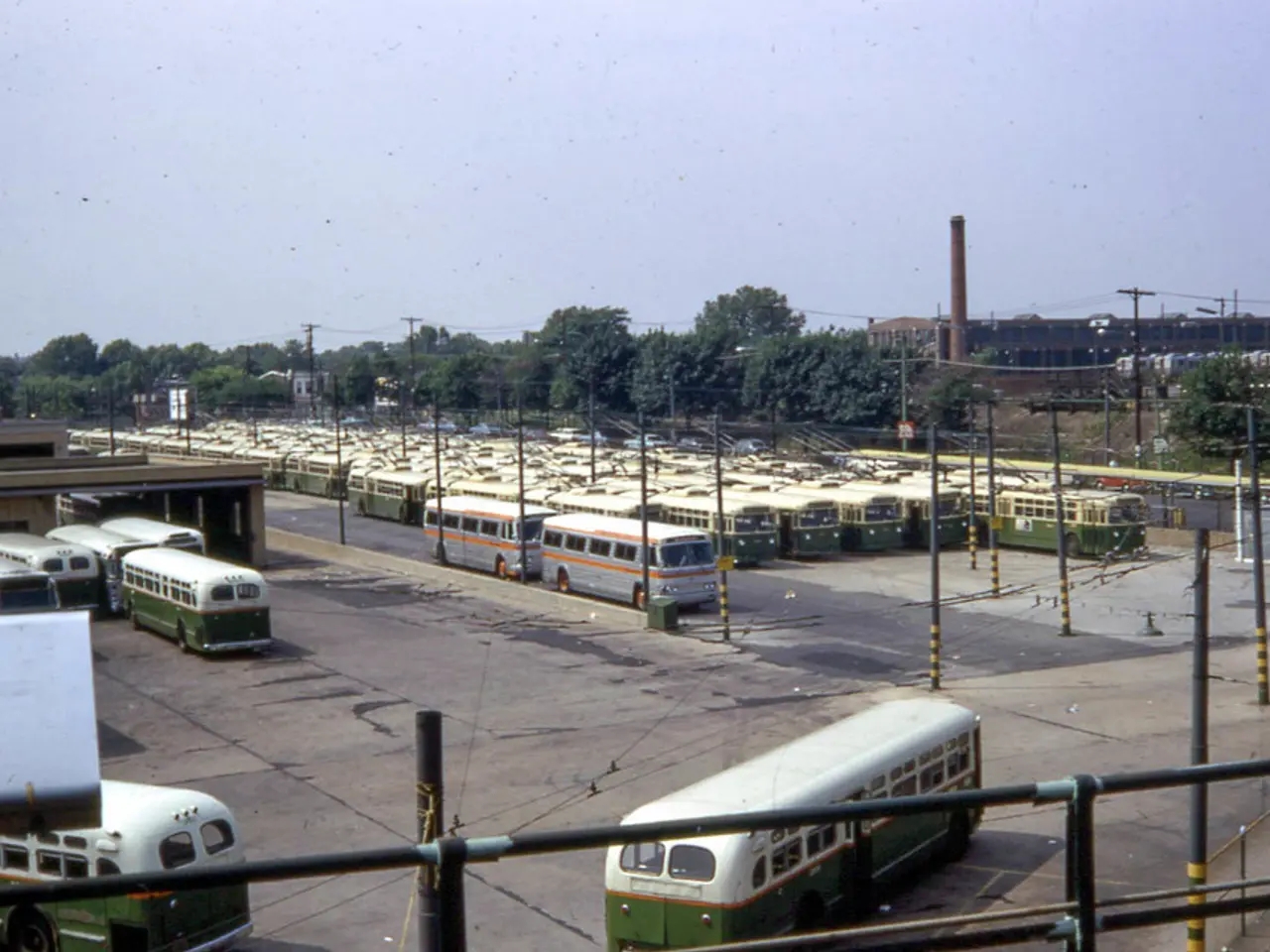Australia's Electric Vehicle Transition Struggles to Gain Speed
In the year 2024, electric vehicles (EVs) account for almost one in ten cars sold, marking a significant shift towards sustainable transportation [1]. However, the distribution of EV chargers is uneven, with nearly 9 in 10 chargers located in metropolitan areas [2]. To address this imbalance, Australia has embarked on a mission to improve EV infrastructure, particularly in high-density living areas and regional regions.
In urban and suburban settings, the nation has witnessed a substantial growth in its fast-charging network. As of mid-2025, over 1,310 public fast-charging sites are operational nationwide, reflecting an 8.5% growth in just three months [3]. This expansion is driven by increasing EV adoption and government incentives, making EV charging more accessible and convenient for urban and suburban users.
To optimize infrastructure placement, the Australian government has launched an Electric Vehicle Charging Infrastructure (EVCI) mapping tool. This tool supports smarter, data-driven planning of new charging stations, considering factors such as EV ownership rates, traffic volume, amenities, electricity infrastructure, and mobile coverage [2]. By promoting efficient siting of chargers in areas of highest demand and optimal grid integration, both dense population centers and regional locations benefit.
For regional and remote Australia, particularly where long distances pose challenges, the focus includes developing a network of up to 165 freight charging hubs targeted at electrifying road freight transport. These hubs are essential to support intrastate and interstate freight trips, which are critical to the economy and currently major sources of emissions [3]. Staged development of electrified freight infrastructure along national highways will enable greater EV utility in regional settings.
The experience of travelling major routes like Perth to Sydney has improved with the establishment of DC fast chargers replacing earlier AC-only setups, making long-distance EV travel more feasible in regional and remote areas. Networks such as the WA EV network and Tesla Superchargers provide relatively reliable and user-friendly charging solutions, though coverage gaps and exclusivity issues remain challenges [4].
Improving the distribution of chargers will help assuage prospective EV buyers, especially for regional residents. The federal government's Driving the Nation fund has invested $39.3 million to help deliver 117 chargers on key highway routes across Australia [5]. Retailers and shopping centres could better appeal to the EV-owning market through discounted charging or dedicated parking.
Collaborative efforts from the private sector, such as replacing commercial fleets with hybrids or EVs, making chargers commonplace in office parking spaces, and offering financial incentives like novated leasing for employees, can help accelerate the EV transition [6].
In apartments, the installation of EV chargers is complex and requires multiple administrative processes, approvals, and a licensed electrician. Older buildings with limited electrical capacity should be targeted for infrastructure upgrades to increase the convenience of charging EVs [7]. The NSW Government has invested $10 million in grants to overhaul over 100 apartment buildings with EV charging stations [8].
Recent changes in government and private sector finances have led to various tax benefits, price reductions, and opportunities to earn money off EVs through vehicle-to-grid charging [9]. In 2025, there are over 100 electric vehicle options available in addition to petrol and diesel cars [10]. Despite this, 44% of Australians cannot afford an electric vehicle [6]. Truman Zhang, president of Dahua Technology Australia and New Zealand, emphasizes the need for affordable, accessible EV solutions for all Australians [11].
In summary, solutions include rapid expansion of public fast-charging sites concentrated in and around population centers, deployment of advanced planning tools (EVCI mapping) to optimize infrastructure placement, development of a national freight charging hub network to serve regional and long-haul transport, and enhanced experience along key regional transport corridors with fast-charging infrastructure adapted to vehicle types and payment convenience. These efforts collectively aim to support increasing EV uptake across urban and regional Australia, addressing the distinct needs of high-density living environments and long-distance travel in less populated areas.
References: [1] Australian Bureau of Statistics. (2024). 2024 Transport Opinion Survey. Retrieved from https://www.abs.gov.au/ausstats/[email protected]/mf/3640.0 [2] Australian Government. (2025). Electric Vehicle Charging Infrastructure (EVCI) Mapping Tool. Retrieved from https://www.transport.gov.au/electric-vehicles/electric-vehicle-charging-infrastructure-evci-mapping-tool [3] ARENA. (2025). Freight Electrification Hubs: A Roadmap for Australia. Retrieved from https://arena.gov.au/research/freight-electrification-hubs-a-roadmap-for-australia/ [4] Electric Vehicle Council. (2025). EV Charging Networks in Australia: A Comprehensive Guide. Retrieved from https://www.evcouncil.com.au/resources/ev-charging-networks-in-australia-a-comprehensive-guide/ [5] Australian Government. (2025). Driving the Nation Fund. Retrieved from https://www.investment.gov.au/innovation/driving-the-nation-fund/ [6] Truman Zhang. (2025). Affordable Electric Vehicles for All Australians. Retrieved from https://www.linkedin.com/pulse/affordable-electric-vehicles-all-australians-truman-zhang/ [7] Australian Energy Market Operator. (2025). Electric Vehicle Charging in Apartment Buildings: Challenges and Solutions. Retrieved from https://www.aemo.com.au/-/media/Files/Electricity/National-Electricity-Market/Initiatives/Renewable-Integration/Electric-Vehicle-Charging/Electric-Vehicle-Charging-in-Apartment-Buildings-Challenges-and-Solutions.pdf [8] New South Wales Government. (2025). $10 Million Grant to Overhaul Apartment Buildings with EV Charging Stations. Retrieved from https://www.nsw.gov.au/media-releases/10-million-grant-to-overhaul-apartment-buildings-with-ev-charging-stations [9] Australian Taxation Office. (2025). Electric Car Discount. Retrieved from https://www.ato.gov.au/Rates/Fringe-benefits-tax-rates/Fringe-benefits-tax-rates---2025-2026/ [10] Electric Vehicle Council. (2025). 120+ Electric Vehicle Models Now Available in Australia. Retrieved from https://www.evcouncil.com.au/resources/120-electric-vehicle-models-now-available-in-australia/ [11] Truman Zhang. (2025). Affordable Electric Vehicles for All Australians. Retrieved from https://www.linkedin.com/pulse/affordable-electric-vehicles-all-australians-truman-zhang/
- Science and technology advancements have led to an increase in renewable energy sources like electric vehicles (EVs), accounting for almost one in ten cars sold in 2024 [1].
- To combat climate change and promote sustainable living, the Australian government is investing in improving EV infrastructure, with a focus on high-density living areas and regional regions [2].
- The expansion of fast-charging network stations has been substantial in urban and suburban settings across Australia, supporting the increasing adoption of EVs [3].
- The private sector plays a crucial role in the EV transition, with initiatives such as replacing commercial fleets with EVs, offering charging solutions in office parking spaces, and providing financial incentives like novated leasing for employees [6].
- As more and more affordable electric vehicle options become available, the government and industry are addressing challenges in less populated areas, such as expanding freight charging hubs and developing efficient fast-charging infrastructure for long-distance travel [3][4][5].




